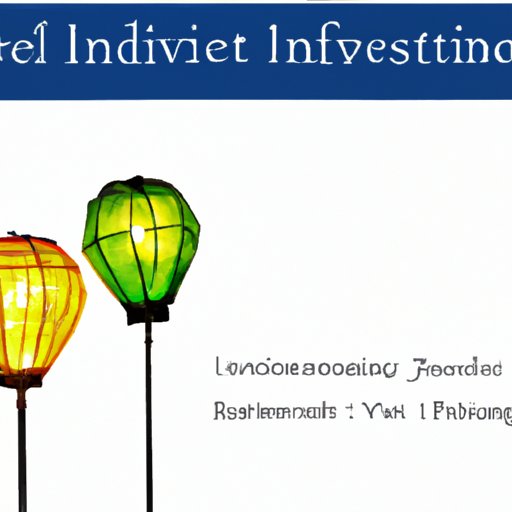Introduction
Index investing is a type of passive investing that involves buying and holding an index, such as the S&P 500 or the Dow Jones Industrial Average. The purpose of this article is to explore the basics of index investing, including its advantages and disadvantages, and provide tips for building a successful portfolio.
Exploring the Basics of Index Investing
An index is a collection of stocks or other securities that tracks the performance of a particular market or sector. For example, the S&P 500 is a stock index that tracks the performance of the 500 largest companies in the United States.
There are two main types of indices: market capitalization-weighted indices and equal-weighted indices. Market capitalization-weighted indices are based on the total market value of a company’s outstanding shares. Equal-weighted indices, on the other hand, are based on the number of shares each company has outstanding.
Index investing involves buying and holding an index fund, which is a basket of stocks or other securities that tracks the performance of an index. Investors can purchase index funds through a brokerage account. When the value of the underlying index rises or falls, so does the value of the index fund.

Overview of Index Investing Strategies
There are two main types of index investing strategies: passive investing and active investing. Passive investing involves buying and holding an index fund for the long term. Active investing involves actively trading index funds in order to take advantage of short-term market movements.
Benefits and Risks of Index Investing
Index investing offers several advantages. It is a low-cost way to invest, since index funds typically have lower fees than actively managed funds. It is also a simple and straightforward way to invest, since there is no need to research individual stocks or sectors. Finally, it is a relatively safe way to invest, since indexes tend to be more diversified than individual stocks.
However, index investing also carries some risks. Since index funds track the performance of a specific index, they are subject to the same market fluctuations as the underlying index. Additionally, since index funds are passively managed, they may not be able to take advantage of short-term market opportunities.

Comparing Index Investing to Other Investment Strategies
Index investing is often compared to traditional investing, exchange-traded funds (ETFs), and mutual funds. Traditional investing involves researching and selecting individual stocks, bonds, and other investments. ETFs are similar to index funds in that they track the performance of an index, but they are traded like stocks on the stock exchange. Mutual funds are actively managed funds that invest in a variety of stocks, bonds, and other securities.
How to Get Started in Index Investing
The first step in index investing is to open a brokerage account. Once you have opened an account, you will need to decide on an investment strategy. Do you want to invest passively or actively? Are you looking to invest in domestic stocks, international stocks, or bonds?
Once you have decided on an investment strategy, you will need to research different indexes to find one that matches your investment goals. You should also consider factors such as the size of the index, its volatility, and its past performance.

A Guide to Different Types of Index Funds
Index funds come in a variety of shapes and sizes. Domestic equity index funds track the performance of U.S. stocks, while international equity index funds track the performance of foreign stocks. Bond index funds track the performance of fixed income securities, such as government bonds and corporate bonds.

Tips for Building a Successful Index Portfolio
Once you have chosen an index fund, you will need to create a diversified portfolio. This means investing in a variety of different asset classes, such as stocks, bonds, and cash. You should also regularly rebalance your portfolio to ensure that your investments remain properly allocated. Finally, you should pay attention to fees and expenses, since these can eat into your returns over time.
Conclusion
Index investing is a simple and cost-effective way to invest in the stock market. It involves buying and holding an index fund that tracks the performance of a particular index. There are both advantages and disadvantages to index investing, and it is important to understand them before getting started. Index investing can be a great way to build a diversified portfolio, but it is important to do your research and choose the right index fund for your investment goals.
Summary of Index Investing
Index investing is a type of passive investing that involves buying and holding an index fund that tracks the performance of a particular index. It is a low-cost and simple way to invest, and can be a great way to build a diversified portfolio. However, it is important to understand the risks associated with index investing and to do your research before choosing an index fund.
Final Thoughts
Index investing is a great way to get started in the stock market. It is a low-cost and straightforward way to invest, and can be a great way to build a diversified portfolio. With a little bit of research and planning, anyone can start investing in index funds and begin building their own portfolio.
(Note: Is this article not meeting your expectations? Do you have knowledge or insights to share? Unlock new opportunities and expand your reach by joining our authors team. Click Registration to join us and share your expertise with our readers.)
